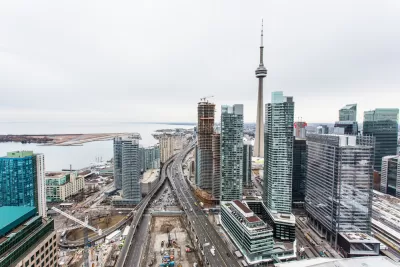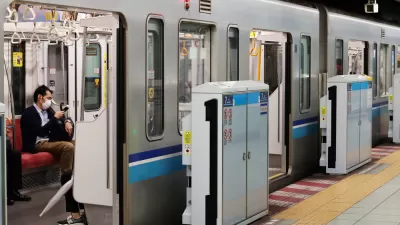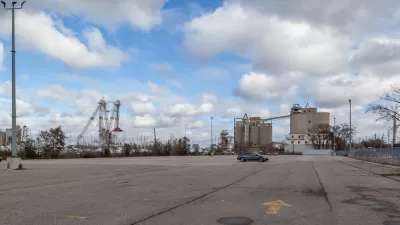Google subsidiary Sidewalk Labs has partnered with Waterfront Toronto to deploy smart city innovations in the redevelopment of the Quayside district along Toronto's Eastern Waterfront.

An interview with Rit Aggarwala, chief policy officer of Sidewalk Labs, delves into the company's experiment with smart city planning in Toronto's Quayside district.
Katherine A. Peinhardt writes a substantial introduction to the interview, writing for the Project for Public Space, so the discussion focuses on place, and technology's ability to rob places of charm. From the introduction:
But building great public spaces, more than any technology, requires a genuine focus on place. PPS has extensive experience in making places like waterfronts vibrant, people-centered places; keeping sight of local identity and prioritizing activity in a space are essential components of any successful project. If they are to take root, urban innovations — from autonomous vehicles to digital wayfinding — must keep these considerations and the community close at hand.
The interview starts with a discussion about the initial steps in Sidewalk Labs' process in Quayside before digging into what to expect from future steps in the process as well as from the technology that will eventually be deployed as redevelopment takes shape. Here's a sample of the discussion, as it focuses on the intersecting forces of real estate and transportation:
Q: How will the big plans for transportation outlined for Sidewalk Toronto support existing modes in the city, like the Subway and its streetcar?
A: Mobility is one of the areas where we have the potential to make a massive difference. It does hinge on an extension to existing modes of transit, as well as the creation of new forms of urban mobility. The fact is that none of what we hope for this site can be realized unless we get the existing transit system expanded into our site. You can’t create a successful urban neighborhood that has an entirely different transportation system. What we envision is a place where we can use both the power of overall real estate development and perhaps some innovative financing tools to work with the city, accelerating what the city already wants to do.
[Editor's note: the source article is from December—a bit dated by Planetizen standards but shared for its ongoing relevance to questions about the shape cities will take as "smart cities" technology evolves and takes shape in cities.]
FULL STORY: Google’s Urban Experiment in Toronto: A Q&A with Sidewalk Labs’ Rit Aggarwala

Alabama: Trump Terminates Settlements for Black Communities Harmed By Raw Sewage
Trump deemed the landmark civil rights agreement “illegal DEI and environmental justice policy.”

Study: Maui’s Plan to Convert Vacation Rentals to Long-Term Housing Could Cause Nearly $1 Billion Economic Loss
The plan would reduce visitor accommodation by 25% resulting in 1,900 jobs lost.

Why Should We Subsidize Public Transportation?
Many public transit agencies face financial stress due to rising costs, declining fare revenue, and declining subsidies. Transit advocates must provide a strong business case for increasing public transit funding.

Paris Bike Boom Leads to Steep Drop in Air Pollution
The French city’s air quality has improved dramatically in the past 20 years, coinciding with a growth in cycling.

Why Housing Costs More to Build in California Than in Texas
Hard costs like labor and materials combined with ‘soft’ costs such as permitting make building in the San Francisco Bay Area almost three times as costly as in Texas cities.

San Diego County Sees a Rise in Urban Coyotes
San Diego County experiences a rise in urban coyotes, as sightings become prevalent throughout its urban neighbourhoods and surrounding areas.
Urban Design for Planners 1: Software Tools
This six-course series explores essential urban design concepts using open source software and equips planners with the tools they need to participate fully in the urban design process.
Planning for Universal Design
Learn the tools for implementing Universal Design in planning regulations.
Smith Gee Studio
Alamo Area Metropolitan Planning Organization
City of Santa Clarita
Institute for Housing and Urban Development Studies (IHS)
City of Grandview
Harvard GSD Executive Education
Toledo-Lucas County Plan Commissions
Salt Lake City
NYU Wagner Graduate School of Public Service




























